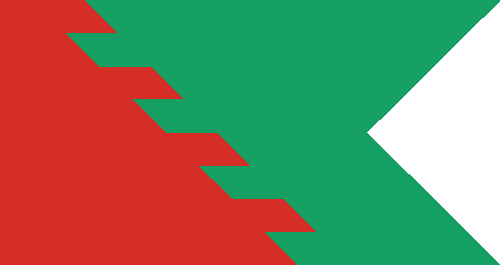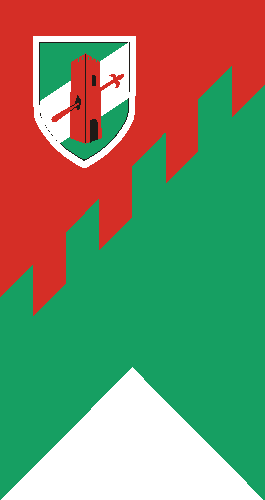
This page is part of © FOTW Flags Of The World website
Assisi (Umbria, Italy)
Comune di Assisi
Last modified: 2001-11-09 by dov gutterman
Keywords: italy | perugia | assisi | umbria |
Links: FOTW homepage |
search |
disclaimer and copyright |
write us |
mirrors
See also:
Note: The information and the images in this page are taken with his kind permission from Peter Orenski presantation: "ASSISI � Banners of Calendimaggio - Mirrors of Conflict". The full presantation is available at http://www.shire.net/flagman/assisi.htm.
Gonfalone of Assisi
It is parti-coloured in red, the colour of the Catholic Church and blue, that of the Empire. The colours date to mediaeval times. On the red are the arms of the Lower Part, and on the blue those of the Upper Part. The arms of Assisi in the cetre countercharge the livery coulors and show a white Latin cross for the Church on the secular blue and a gold rampant lion for the Empire on the ecclesiastical red. The lion is on a green base. The countercharging of colours and symbols shows the merging of the two aspects. The end of the banner is cut into six squared tails, representing the six "rioni".
Peter Orenski
(from his presantation in ICV 19 at York, July 2001)
Upper Part
The arms are a red edged white shield ith a three-towered castle supported by two cats, emblem of the Mammoni family, a family associated with the mediaeval Ghibelline faction, which controlled the Upper Part, The three-step cut in the lower edge represents the three towers of the castle.
Peter Orenski
(from his presantation in ICV 19 at York, July 2001)
Rione Porta Perlici
Porta Perlici is one of the six gates through the mediaeval walls of Assisi. Two roads converge on this gate in a "Y" - shape formation. This design appears on the Arms. The gonfalone repeats the motif of the two roads, with the lower part of the "Y" extended into the central tail.
Peter Orenski
(from his presantation in ICV 19 at York, July 2001)
Rione San Rufino
Rione San Rufino is the central district of the Upper Part, and includes the cathedral dedicated to Saint Rufino, the first bishop of Assisi. The arms show the mill-stone and rope used to kill the saint.
Peter Orenski
(from his presantation in ICV 19 at York, July 2001)
Rione Porta Moiano
The arms show the costellation Ursa Major in gold stars on blue. The gonfalon quarters the colours of the shield and has a simple forked lower edge.
Peter Orenski
(from his presantation in ICV 19 at York, July 2001)
Lower Part
The gonfalon is red and bears the arms in the upper centre. The arms are those of Fiumi family, once a leading force of the Guelph faction in the area. The gold tower is placed on green stripes for land and has a blur river issuing from the base. As the name "Fiumi" translates as "rivers", the link is obvious. The gonfalon's lower edge has three tails for the three component rioni.
Peter Orenski
(from his presantation in ICV 19 at York, July 2001)
Rione San Pietro
Saint Peter was the first Pope. A fisherman by trade, his name was Simon until Christ called him "Peter" meaning the Rock and gave him the keys of the Kingdom of Heaven. Each of these attributes is shown in the shield. The gonfalon has the arms in the upper left corner and divides the livery colours by a wavy line, repeated in the shape of the bottom edge.
Peter Orenski
(from his presantation in ICV 19 at York, July 2001)
Rione San Francesco
This area surrounds the basilica of Saint Francis. The truncated cross was adopted as an ebmblem by the Franciscan Order during the Saint's lifetime. It stands on three hills connected to the saint (Mt. Subasio, Mt. Ingino, Mt. Verna). The three stars may represnt the Trinity, the three Franciscan orders or the first three men to join Francis. The gonfalon reverses the city's colours, and the lower edge recalls the three hills on the arms.
Peter Orenski
(from his presantation in ICV 19 at York, July 2001)
Rione San Giacomo
The arms are green with a broad white diagonal stripe. Overall is a red tower pierced by a spear. This recall the church of San Giacomo de Muro Rupto (St. Jacob of the broken wall), from ehich the rione takes uts name. The arms appear in the upper right corner of the gonfalon. This is divided diagonally ascending red over green, the line seperating the colours being serrated like a crenellation, reinforcing the idea of the tower on the arms.
Peter Orenski
(from his presantation in ICV 19 at York, July 2001)
|
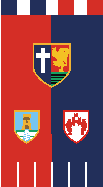


fgas1.gif)
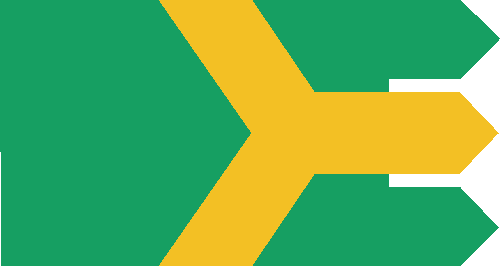



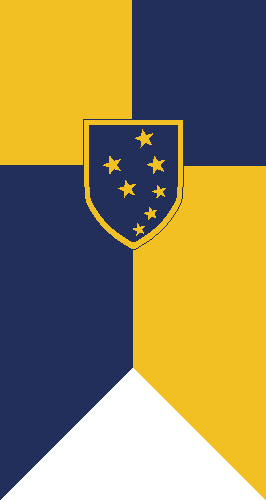
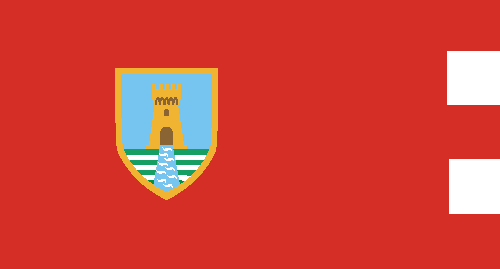
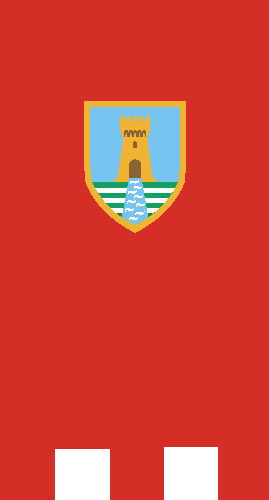
fgas5.gif)


fgas6.gif)


